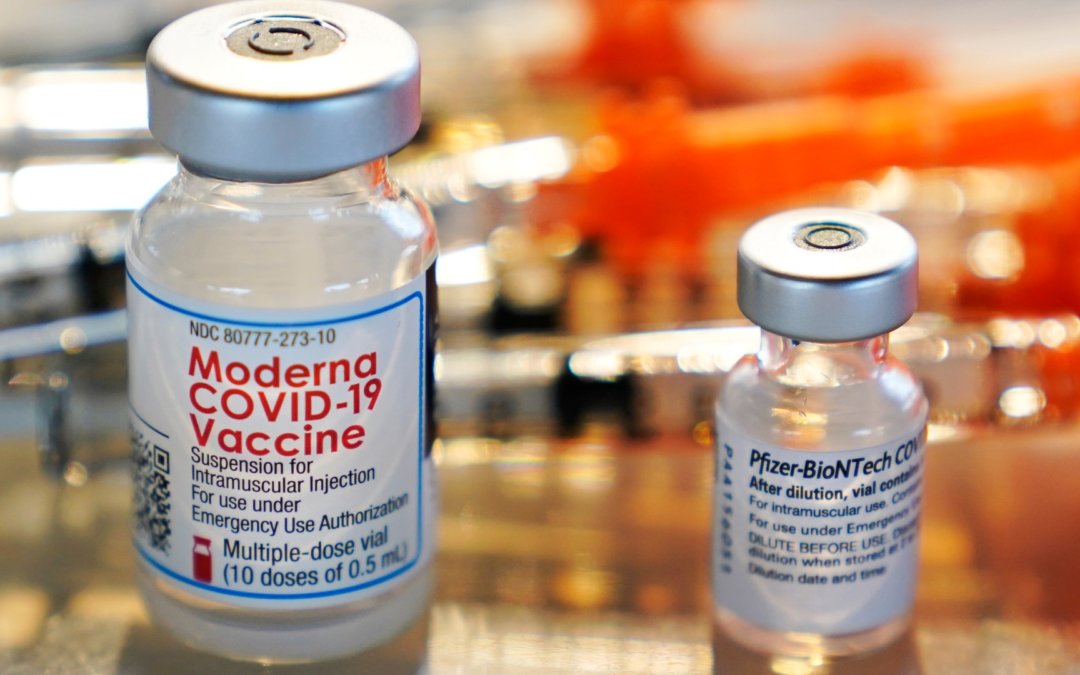Mix and match boosters
October 27, 2021
In recent news, the CDC/FDA are approving booster shots not only for Pfizerã but also for Modernaã and Johnson & Johnsonã, and even mixing and matching these boosters, but is there any science behind this recommendation? According to this medRvix pre-print server article, the science appears to be based on this paper, not yet peer-reviewed study and anecdotal evidence out of desperation to continue to protect already vaccinated individuals from breakthrough infections.
From this pre-print, they stated that this phase 1/2 adaptive design, open-label clinical trial was performed in sequential stages at ten clinical sites. Eligible participants were healthy adults who had received a Covid-19 vaccine available under EUA (Ad26.COV2.S [Janssen], mRNA-1273 [Moderna, Inc], or BNT162b2 [Pfizer/BioNTech]) at least 12 weeks earlier and reported no prior history of SARS-CoV-2 infection or monoclonal antibody infusion. They then described that of the 458 individuals were enrolled: 154 received mRNA-1273, 150 received Ad26.CoV2.S, and 153 received BNT162b2 booster vaccines. Reactogenicity was similar to that reported for the primary series.
Then they get to the results. They reported that the booster vaccines increased the neutralizing activity against a D614G pseudovirus (4.2-76-fold) and binding antibody titers (4.6-56-fold) for all combinations; homologous boost increased neutralizing antibody titers 4.2-20-fold whereas heterologous boost increased titers 6.2-76-fold. Day 15 neutralizing and binding antibody titers varied by 28.7-fold and 20.9-fold, respectively, across the nine prime-boost combinations. When they reported these measures, were they reporting them from relative risks, and hence the interpretations of the “fold” could have been from interpreting risks derived from some statistical model. They described no statistical methods whatsoever in their preprint and they said they were available but in trying to find these, they were not in fact available as they said. Therefore, it is still hard to understand with what limited information is provided at this time and that being from a pre-print article, what exactly kind of science is available to bring about these interpretations.
Written by,
Usha Govindarajulu
Keywords:
COVID-19, boosters, clinical trial, pre-print, Usha Govindarajulu
References:
Heterologous SARS-CoV-2 Booster Vaccinations – Preliminary Report
Robert L. Atmar, Kirsten E. Lyke, Meagan E. Deming, Lisa A. Jackson, Angela R.Branche, Hana M. El Sahly, Christina A. Rostad, Judith M. Martin, Christine Johnston, Richard E. Rupp, Mark J. Mulligan, Rebecca C. Brady, Robert W. Frenck Jr., MartínBäcker, Angelica C. Kottkamp, Tara M. Babu, Kumaravel Rajakumar, SrilathaEdupuganti, David Dobryzynski, Christine M. Posavad, Janet I. Archer, Sonja Crandon, Seema U. Nayak, Daniel Szydlo, Jillian Zemanek, Clara P. Dominguez Islas, Elizabeth R.Brown, Mehul S. Suthar, M. Juliana McElrath, Adrian B. McDermott, Sarah E.O’Connell, David C. Montefiori, Amanda Eaton, Kathleen M. Neuzil, David S.Stephens, Paul C. Roberts, John H. Beigel, the DMID 21-0012 Study Group
medRxiv 2021.10.10.21264827; doi:https://doi.org/10.1101/2021.10.10.21264827
https://www.medrxiv.org/content/10.1101/2021.10.10.21264827v2
https://i1.wp.com/www.arise.tv/batman/2021/10/Mix-and-Match-Covid-Booster-Shots.jpeg?fit=1920%2C1080&ssl=1
